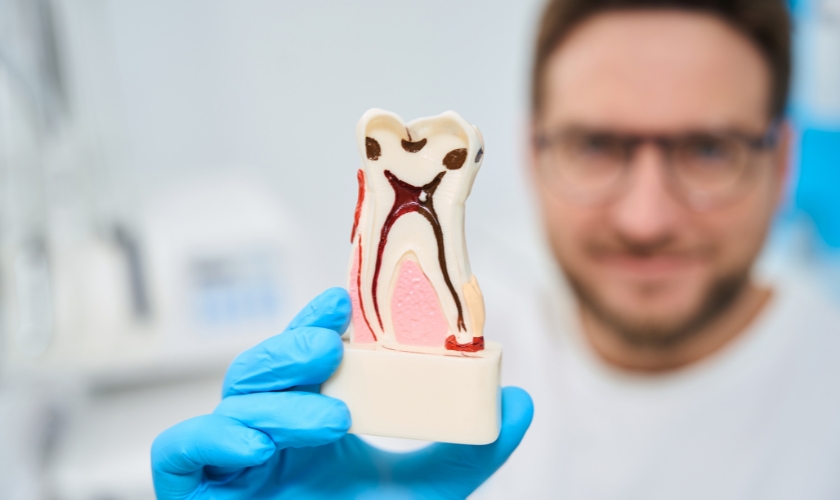After-Work Appointments For New Patients Now Available Until 8pm!

Root canal therapy often carries a reputation that doesn’t match the reality. For many patients, the term brings up images of pain and stress, but root canal treatment is a gentle, precise, and highly effective way to save your natural teeth. This blog will uncover how root canal therapy works, the problems it solves, and where it fits into your long-term dental care.
What Is Root Canal Therapy?
A root canal is a dental treatment that eradicates infected or inflamed pulp within the tooth. This soft tissue inside the root canal system may become infected because of deep decay, trauma, cracks, or repeated dental treatment.
After the pulp is extracted, the area is washed, disinfected, and sealed so it cannot be infected again. The procedure is no more uncomfortable than having a filling, contrary to what was once thought, thanks to current tools and anesthesia.
Role of Root Canal in Dental Care
Root canal therapy is important in maintaining oral health and saving natural teeth. It addresses the root of tooth pain and infection rather than merely covering up the symptoms.
Below are the most significant issues that root canal therapy addresses—and how:
- Severe Tooth Infection: When bacteria gain access to the pulp chamber, it may result in an abscess or inflammation. A root canal removes the infection source by extracting the infected tissue.
- Intense Tooth Pain: Inflamed pulp or pressure of infection may result in a throbbing ache. Root canal cleaning gives instant relief.
- Facial Swelling or Gum Boils: Symptoms of an advanced infection. By opening up the canals and disinfecting the tooth, infection spread is arrested.
- Risk of Tooth Loss: Rather than having the tooth removed, root canal treatment saves it and restores maximum function, keeping your bite even and jawbone intact.
Through solving these problems from the inside out, root canal treatment restores comfort and stability to your oral health.
Where Does It Fit in an Integrated Treatment Plan?
Root canal isn’t a starting point—rather, it’s part of a broader restorative treatment following extensive diagnosis and planning.
Here’s how it fits in your dental care plan:
- Diagnosis Stage: If you have persistent pain or sensitivity, your dentist will most likely use digital X-rays or 3D scans to test for infected pulp or bone trauma.
- Treatment Phase: After it is diagnosed, the root canal is done to prevent the damage. This step is more advanced than a filling but far less invasive than extraction and replacement.
- Restoration Phase: Following the root canal, most patients require a crown to shield the tooth from fractures and restore chewing force.
This step-by-step process preserves the tooth, restores it fully, and supports it for years to come.
Root canal therapy is a cornerstone of modern dental care—rescuing infected teeth, relieving pain, and preventing unnecessary tooth loss. When included as part of a well-planned dental treatment, it saves your tooth and helps preserve your oral health. If you’re noticing persistent pain, swelling, or sensitivity, don’t wait—schedule a dental evaluation and take the first step toward lasting relief.




